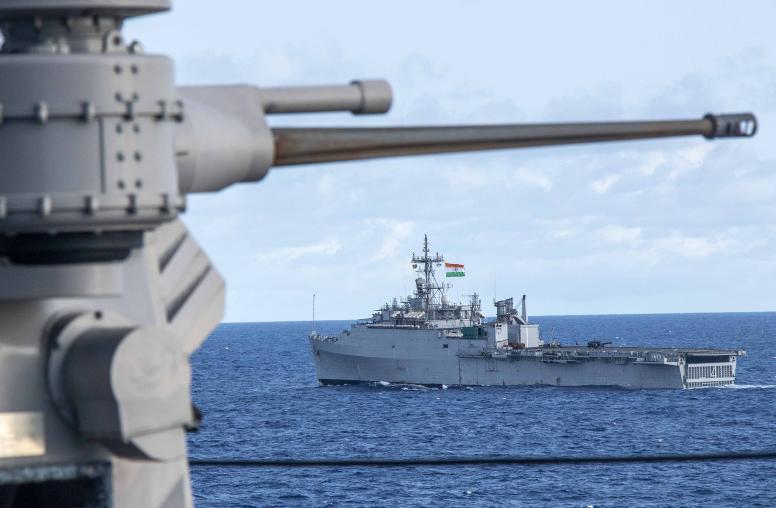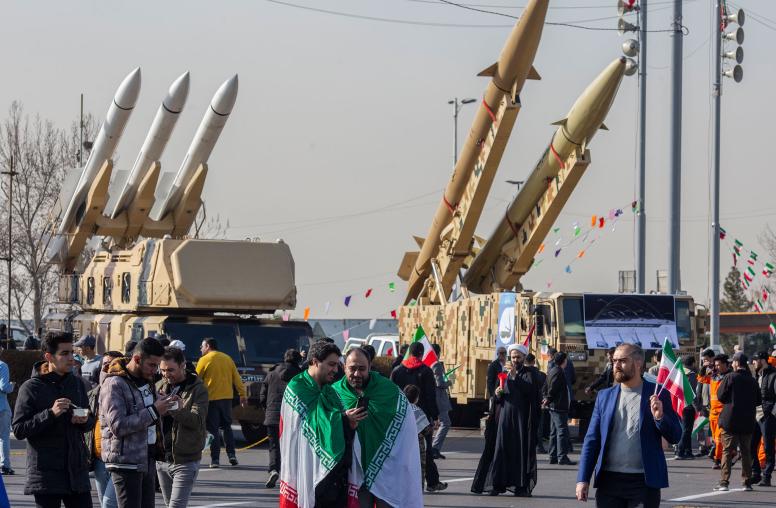Months after U.S. troops invaded Iraq in 2003, Army Colonel Paul Hughes quietly slipped out of the fortified U.S. headquarters in Baghdad’s “Green Zone” on a personal mission — to meet Iraqis and analyze the rising danger signs of disasters to come. American forces lacked a viable plan to stabilize this violent, trauma-scarred land, and Hughes’ nighttime conversations with Iraqis — scholars, business owners and former military officers — confirmed to him that the U.S. effort was dangerously isolated from Iraqi realities that would soon ignite an insurgency and eventually breed the Islamic State (ISIS) and a new war.

Hughes, an Iraq-experienced strategic advisor on the U.S. bid to stabilize the country, told senior U.S. officials that the American effort was failing in a most basic task — communicating with the 26 million people it proposed to guide toward more democratic governance. “I started sending e-mails” to U.S. officials in Baghdad and Washington, Hughes recalls, “and in August I was summoned back to Washington, where I was told to report to an office in the Old Executive Office Building” next to the White House. “I got chewed out for not being a ‘team player’” in presenting the Iraq war as a success story.
For Hughes, “military service was our family business.” The scion of generations of U.S. officers, he had entered the Army nearly 30 years earlier, soon after his older brother had been killed in the Vietnam War and his father, a major general leading key units in Europe amid the Cold War, had died in a military plane crash. Now Hughes was disillusioned by a war that he saw as unnecessary, ill-planned and politically tainted. The Iraq war would kill hundreds of thousands of Iraqis, kill or injure more than 30,000 Americans, inflict torture on Iraqi prisoners of U.S. forces and damage America’s moral standing. Hughes would soon retire from the Army only to return to Baghdad as a civilian, helping Iraqis begin a long process of reconciliation to end their country’s chronic violence.
Hughes’ story crystallizes a meaning in this first Veterans Day since America ended its 21st-century wars in Iraq and Afghanistan. More than the rituals of this or any Veterans Day, two sober commitments by our nation would truly value our neighbors and relatives who serve in uniform. First, if America is to avoid self-inflicted wounds such as the Iraq war, we must scrupulously test any proposed military engagement against the realities of the conflict at hand—and against our own standards of justice.
The Alternative to ‘Forever Wars’
Our other vital step is to strengthen America’s reliance on the fundamental alternative to our recent “nation-building” missions, with their risks of open-ended “forever wars.” The alternative is this: When failing or fragile states slide into warfare, collapse or authoritarian rule, threatening peace in their neighborhoods or beyond, America must begin framing its response not with military-led “nation-building,” but with locally led “peacebuilding” to help traumatized nations solve their own problems nonviolently. In violent countries, peacebuilding works with both governments and grassroots civil society, supporting local leaders and constituencies to repair frayed social contracts, improve governance and build peace. Peacebuilding operates at minuscule fractions of the costs of military action — and it is the alternative that Hughes and many U.S. military veterans have joined in developing, notably at the U.S. Institute of Peace.
Soon after leaving the Army, Hughes returned to Baghdad to head a USIP peacebuilding initiative mandated by Congress. He helped launch a program that would guide dialogues among Iraq’s rival ethnic and religious groups, and bolster Iraqis in establishing the rule of law amid the rubble of Saddam Hussein’s dictatorship. Just as Hughes’ military career stretched from Korea to Germany and the Middle East, his subsequent peacebuilding work covers the map. He led in facilitating congressionally mandated studies of U.S. foreign policy problems, including the bipartisan Iraq Study Group of 2005-2006, and the 2008-2009 examination of arms control, nonproliferation and related issues by the Congressional Commission on the Strategic Posture of the United States.
In Iraq, the reconciliation work that Hughes helped launch has trained and mentored Iraqi mediators who have guided local-level peace agreements that help to stabilize eight cities and districts so far. The first of those local peace accords, in what U.S. forces once called “The Triangle of Death,” south of Baghdad, reduced U.S. military casualties, allowed an 80-percent drawdown of American forces in the district, and has bolstered stability for nearly 15 years. Overall, the USIP-supported local peace accords have created conditions for the return of more than 1 million displaced people over more than a decade, with an attendant reduction in humanitarian costs.
Building peace is scalable — and the Institute pursues it in dozens of countries facing violence (Libya, Niger, Burkina Faso, Nigeria, Kenya, Myanmar, Colombia and Venezuela to name a fistful). Indeed, the Institute is expanding its work globally to confront rising threats to U.S. security and international stability from climate change, authoritarian regimes, disparate extremisms, and the world’s worst-ever crisis of human displacement: 82 million people now uprooted by violence. Even before this year’s traumatic U.S withdrawal from Afghanistan underscored the failings of military-led nation-building efforts, Congress last year advanced the peacebuilding approach with the Global Fragility Act, mandating a whole-of-government strategy to combine diplomacy, development aid and conflict prevention at the center of America’s response to fragile and violence-afflicted countries.
“Peacebuilding is not, as some people imagine it, some kind of idealist pacifism,” say, of “people gathering in a circle to sing ‘Kum Bay Yah,’” says Hughes. It is rather a hard-nosed weighing of costs and benefits in light of the realities of a conflict. It guides foes in a conflict to do the tough work of finding common ground rather than surrendering to the inertia, emotions and habits of violence. “All wars must eventually end,” Hughes says, “but ending wars is usually harder than starting them.” Peacebuilding takes many forms — from formal peace talks to training of civic activists, grade-school lessons, meticulously guided dialogues between rivals, or nonviolent mass protests in the streets.
A Strategy for Survival
In the end, Veterans Day demands that we honor others’ sacrifices by never asking for them needlessly. Meeting that test means that in building peace or considering war, “we must begin by understanding the underlying conflict, down to its roots,” Hughes says. If we haven’t done that analytical spadework, he says, we’ll do better not to engage with the conflict at all. Only that clear-eyed analysis, untainted by politics, can permit a vital second step in either peacebuilding or warfighting — one that Hughes notes was articulated by former Secretary of State Colin Powell. That is, “we must define our goals and ensure that we’re applying all the necessary tools to achieve them,” Hughes says.
“There is no good war,” Hughes says finally, “but there are necessary wars.” In the shaping of America’s foreign engagements, Hughes has noted, we will do well to heed Woodrow Wilson’s call that we always “show sympathy with peace and justice.” Wilson urged that standard as he proclaimed Armistice Day, the 1919 celebration of the end of World War I that we now recognize as Veterans Day. On this 102nd observance of that day, we can be certain that our world’s widening inequities, and the deepening desperation of billions of people, accelerated by a degrading climate, will confront us and coming generations too often with the choice of how to respond to violence. Bolstering our alternatives to war is not simply a sympathetic choice. It is national security imperative, a strategy for survival and the gift of hope that we owe our children.





